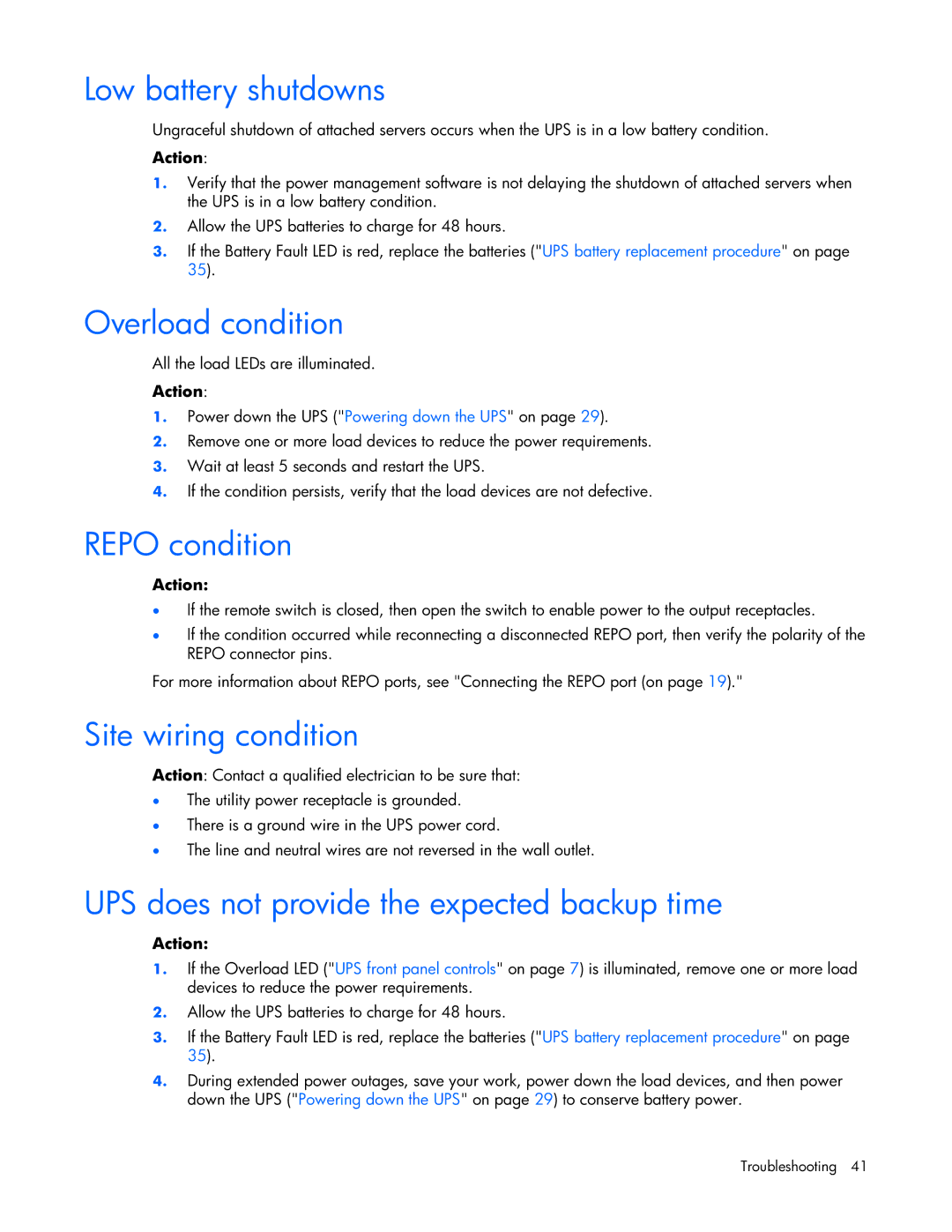Low battery shutdowns
Ungraceful shutdown of attached servers occurs when the UPS is in a low battery condition.
Action:
1.Verify that the power management software is not delaying the shutdown of attached servers when the UPS is in a low battery condition.
2.Allow the UPS batteries to charge for 48 hours.
3.If the Battery Fault LED is red, replace the batteries ("UPS battery replacement procedure" on page 35).
Overload condition
All the load LEDs are illuminated.
Action:
1.Power down the UPS ("Powering down the UPS" on page 29).
2.Remove one or more load devices to reduce the power requirements.
3.Wait at least 5 seconds and restart the UPS.
4.If the condition persists, verify that the load devices are not defective.
REPO condition
Action:
•If the remote switch is closed, then open the switch to enable power to the output receptacles.
•If the condition occurred while reconnecting a disconnected REPO port, then verify the polarity of the REPO connector pins.
For more information about REPO ports, see "Connecting the REPO port (on page 19)."
Site wiring condition
Action: Contact a qualified electrician to be sure that:
•The utility power receptacle is grounded.
•There is a ground wire in the UPS power cord.
•The line and neutral wires are not reversed in the wall outlet.
UPS does not provide the expected backup time
Action:
1.If the Overload LED ("UPS front panel controls" on page 7) is illuminated, remove one or more load devices to reduce the power requirements.
2.Allow the UPS batteries to charge for 48 hours.
3.If the Battery Fault LED is red, replace the batteries ("UPS battery replacement procedure" on page 35).
4.During extended power outages, save your work, power down the load devices, and then power down the UPS ("Powering down the UPS" on page 29) to conserve battery power.
Troubleshooting 41
